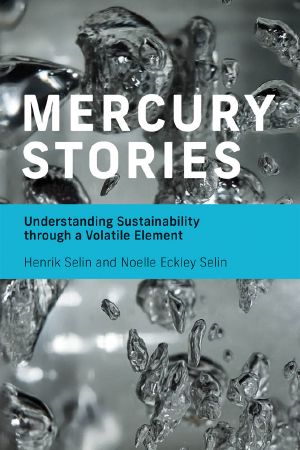Mercury Stories, Understanding Sustainability through a Volatile Element

- Authors
- Selin, Henrik
- Publisher
- MIT Press
- Tags
- mercury; sustainability; minamata; sustainability science; systems; interactions; interventions; system analysis; transitions; governance; coupled human-natural systems; social-environmental systems; biogeochemical cycling; minamata convention; pollution; global change; life-cycle analysis; methylmercury; human health; pollution exposure; medicine; occupational health; history of medicine; dental amalgam; vaccination; emissions; coal; air pollution; energy; best available technology (bat); fossil fuels; products and processes; innovation; waste; contaminated sites; industry; technology; chemicals; chlor-alkali; batteries; light bulbs; gold; artisanal and small-scale gold mining; asgm; mining; certification schemes; sustainable livelihoods; citizen action; stakeholders
- Date
- 2020-10-20T00:00:00+00:00
- Size
- 22.35 MB
- Lang
- en
An interdisciplinary analysis of human interactions with mercury through history that sheds light on efforts to promote and achieve sustainability. In Mercury Stories , Henrik Selin and Noelle Eckley Selin examine sustainability through analyzing human interactions with mercury over thousands of years. They explore how people have made beneficial use of this volatile element, how they have been harmed by its toxic properties, and how they have tried to protect themselves and the environment from its damaging effects. Taking a systems approach, they develop and apply an analytical framework that can inform other efforts to evaluate and promote sustainability.
After introducing the framework, which uses the lens of a human-technical environmental system and a matrix-based approach to analyze mercury use and exposure, the authors examine five topical mercury systems that each illustrate important issues in mercury science and governance: global cycling of mercury through the atmosphere, land, oceans, and societies; mercury's dangers to human health, including from occupational, medical, and dietary exposure; mercury emissions to the atmosphere from industrial sources; mercury in commercial products and production processes; and mercury use in artisanal and small-scale gold mining. Finally, looking across the five mercury systems, they distill insights for sustainability analysis more broadly, and draw lessons for researchers, decision-makers, and concerned citizens.